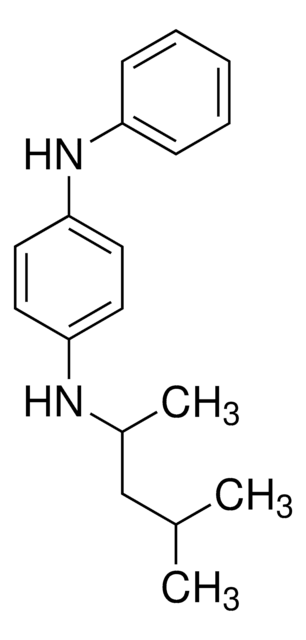B9934
BTA-1
≥98% (HPLC), solid
Sinônimo(s):
2-(4´-Methylaminophenyl)benzothiazole
Faça loginpara ver os preços organizacionais e de contrato
About This Item
Fórmula empírica (Notação de Hill):
C14H12N2S
Número CAS:
Peso molecular:
240.32
Número MDL:
Código UNSPSC:
12352200
ID de substância PubChem:
NACRES:
NA.77
Produtos recomendados
Ensaio
≥98% (HPLC)
Formulário
solid
cor
yellow
solubilidade
DMSO: soluble ~10 mg/mL
temperatura de armazenamento
2-8°C
cadeia de caracteres SMILES
CNc1ccc(cc1)-c2nc3ccccc3s2
InChI
1S/C14H12N2S/c1-15-11-8-6-10(7-9-11)14-16-12-4-2-3-5-13(12)17-14/h2-9,15H,1H3
chave InChI
FHJRKGXJBXPBGA-UHFFFAOYSA-N
Informações sobre genes
human ... APP(351)
Categorias relacionadas
Ações bioquímicas/fisiológicas
BTA-1 is a fluorescent thioflavin-T derivative with 50-fold higher affinity for β-amyloid aggregates.
BTA-1 is a probe for β-amyloid aggregates; fluorescent thioflavin-T derivative; exhibits high affinity for amyloid deposits; displays 50-fold higher affinity than thioflavin-T; selectively stains cerebral plaques and cerebrovascular amyloid deposits in the brains of PS1/APP transgenic mice, as well as Aβ fibrils in postmortem brain tissue obtained from AD patients; crosses the blood brain barrier.
Código de classe de armazenamento
11 - Combustible Solids
Classe de risco de água (WGK)
WGK 3
Ponto de fulgor (°F)
Not applicable
Ponto de fulgor (°C)
Not applicable
Equipamento de proteção individual
Eyeshields, Gloves, type N95 (US)
Escolha uma das versões mais recentes:
Já possui este produto?
Encontre a documentação dos produtos que você adquiriu recentemente na biblioteca de documentos.
W E Klunk et al.
Life sciences, 69(13), 1471-1484 (2001-09-14)
In vivo assessment of the beta-sheet proteins deposited in amyloid plaques (A beta peptide) or neurofibrillary tangles (tau protein) presents a target for the development of biological markers for Alzheimer's disease (AD). In an effort to develop in vivo beta-sheet
Ruiqing Ni et al.
Journal of nuclear medicine : official publication, Society of Nuclear Medicine, 59(6), 960-966 (2018-02-09)
Fibrillary tau aggregates in Alzheimer disease and allied neurodegenerative disorders have been visualized in vivo by PET, whereas mechanistic links between PET-detectable tau deposits and neurotoxicity remain elusive. Here, we took advantage of transgenic mouse models of tauopathies to evaluate
Alex C Kwan et al.
Optics express, 17(5), 3679-3689 (2009-03-05)
Intrinsic optical emissions, such as autofluorescence and second harmonic generation (SHG), are potentially useful for functional fluorescence imaging and biomedical disease diagnosis for neurodegenerative diseases such as Alzheimer's disease (AD). Here, using multiphoton and SHG microscopy, we identified sources of
Chester A Mathis et al.
Bioorganic & medicinal chemistry letters, 12(3), 295-298 (2002-01-30)
The synthesis of a new lipophilic thioflavin-T analogue (2-[4' -(methylamino)phenyl]benzothiazole, 6) with high affinity for amyloid is reported. Intravenous injection of [(11)C]-labeled 6 in control mice resulted in high brain uptake. Amyloid deposits were imaged with multiphoton microscopy in the
William E Klunk et al.
The Journal of neuroscience : the official journal of the Society for Neuroscience, 23(6), 2086-2092 (2003-03-27)
2-(4'-methylaminophenyl)benzothiazole (BTA-1) is an uncharged derivative of thioflavin-T that has high affinity for Abeta fibrils and shows very good brain entry and clearance. In this study, we asked whether BTA-1, at concentrations typical of those achieved during positron emission tomography
Nossa equipe de cientistas tem experiência em todas as áreas de pesquisa, incluindo Life Sciences, ciência de materiais, síntese química, cromatografia, química analítica e muitas outras.
Entre em contato com a assistência técnica








